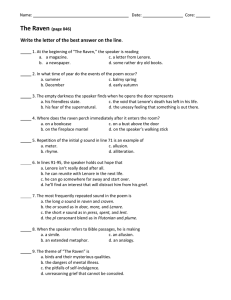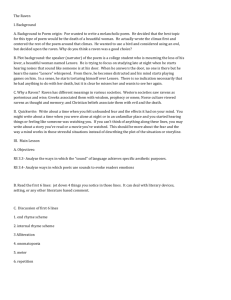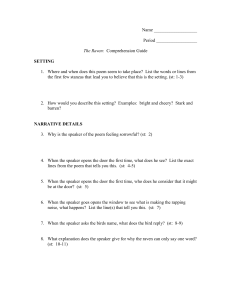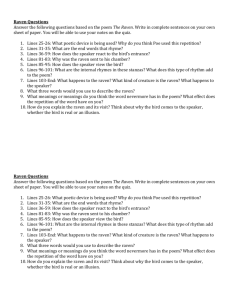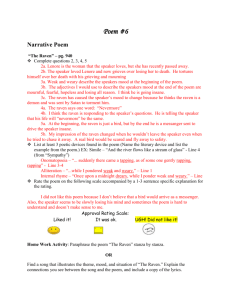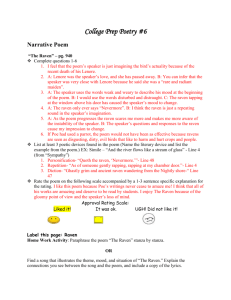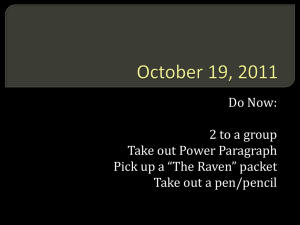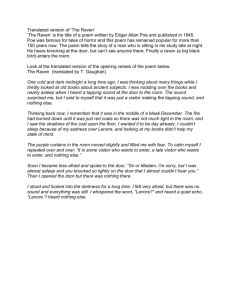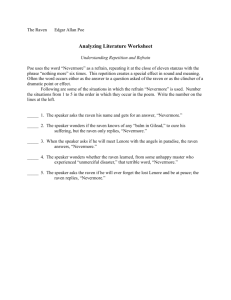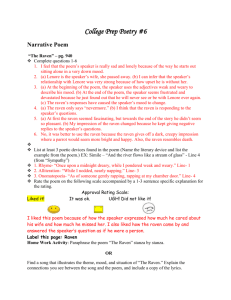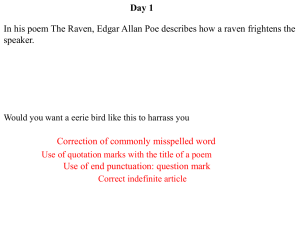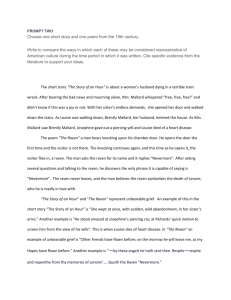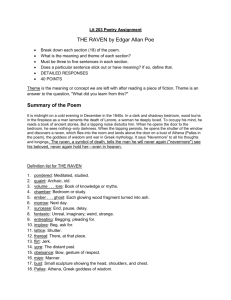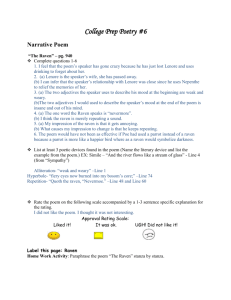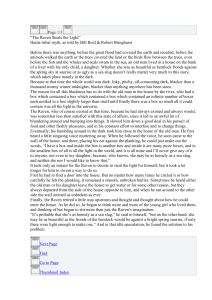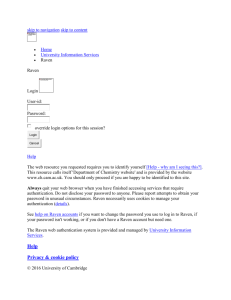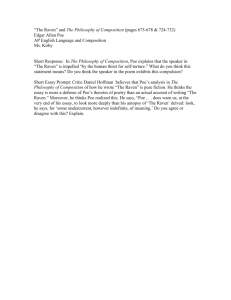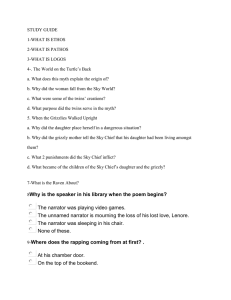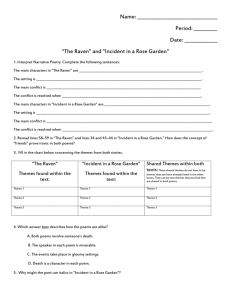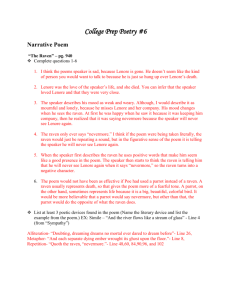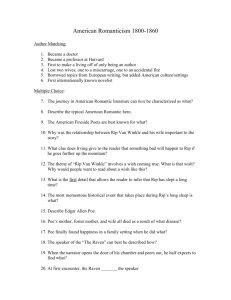Thesis:
advertisement
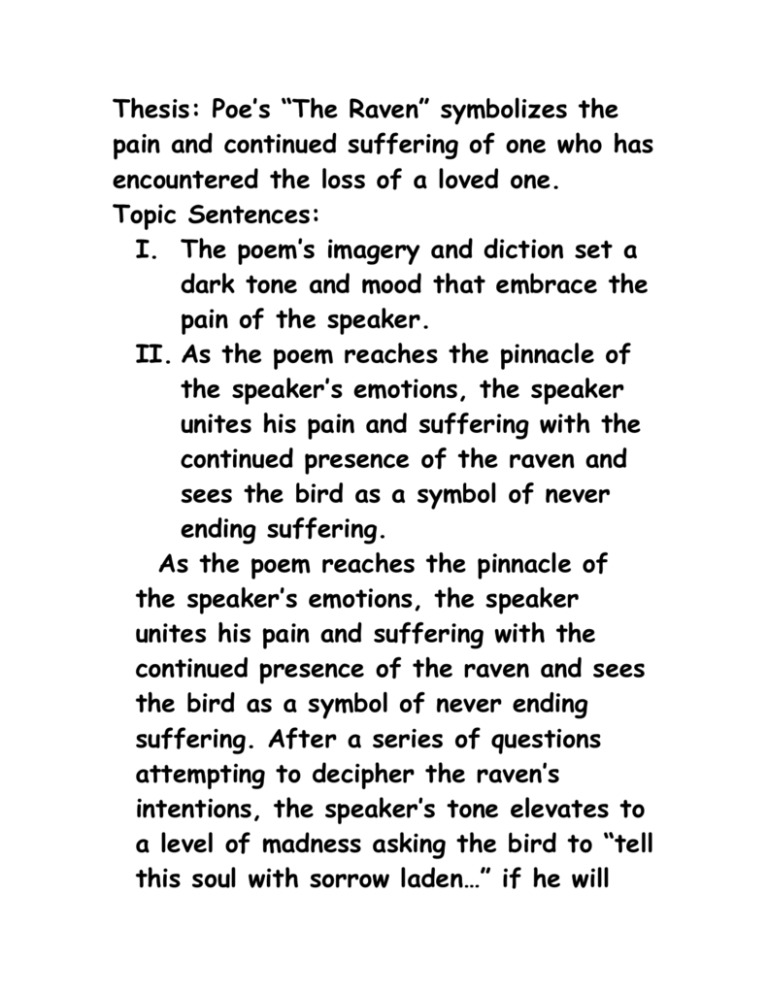
Thesis: Poe’s “The Raven” symbolizes the pain and continued suffering of one who has encountered the loss of a loved one. Topic Sentences: I. The poem’s imagery and diction set a dark tone and mood that embrace the pain of the speaker. II. As the poem reaches the pinnacle of the speaker’s emotions, the speaker unites his pain and suffering with the continued presence of the raven and sees the bird as a symbol of never ending suffering. As the poem reaches the pinnacle of the speaker’s emotions, the speaker unites his pain and suffering with the continued presence of the raven and sees the bird as a symbol of never ending suffering. After a series of questions attempting to decipher the raven’s intentions, the speaker’s tone elevates to a level of madness asking the bird to “tell this soul with sorrow laden…” if he will “clasp a sainted maiden whom the angels name Lenore.” Desiring to know if he will ever hold his lost love again, the speaker’s frustration reaches its height when the bird responds, “Nevermore.” Though this is the only word the raven ever speaks, the speaker’s grief interprets the raven’s visit and his one word as an answer to his soul’s deepest yearning. He shrieks for the raven to “take thy beak from out my heart, and take thy form from off my door…” thus intentionally stating the symbolism explicitly of the “beak” representing the inflicted pain, the darkness of grief that has pierced him since the death of Lenore. Furthering the depth of his pain, his final comments on the position of the raven in his home reflect the angst of his continued pain as the verb tense shifts from the past, as of one telling a story, to the present, as of one who is in the midst of this description. He states that the “Raven, never flitting, still is sitting, still is sitting…” just as his soul “shall be lifted—nevermore!” This final statement secures the terror of the realization that grief may never subside for the speaker.
